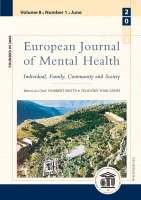Canonisation of New Martyrs and Confessors of the 20th Century in the Russian Orthodox Church
Canonisation of New Martyrs and Confessors of the 20th Century in the Russian Orthodox Church
Author(s): Mikus SolovejsSubject(s): History of Church(es)
Published by: Semmelweis Egyetem Mentálhigiéné Intézet
Keywords: state and church; Soviet Union/Russia; communism; state socialism; dictatorship; history; retrospect; Orthodox Church; martyrs; persecutions; canonisation
Summary/Abstract: At present, the Russian Orthodox Church faces a serious evaluation of the history of the Church in the 20th century. As it is known, the 20th century for the Russian Orthodox Church was a tragic one. The communist regime realised not only mass physical and spiritual terror, but created falsifications and myths of history as well. One of the main ideals of the communist regime was the extermination of Christian faith and the aspersion of religious practice. Therefore one of the essential steps in the direction of renewal of historical truth was the canonisation of the victims – the new martyrs and confessors – of communist terror in the Local Councils of the Moscow Patriarchy. Similarly, saints have always served as examples of religious practice. That would serve as well as a reminder about the goals of human life, the value of life and the highest example for respect towards a person. In the first part of the article, the bloodiest pages of history of the Russian Church are examined, when the Bolshevik, coming into power, started the persecution of the Orthodox Church. The article observes the persecutions commenced by the Soviet state in the 1918–1941 period, as during this time the most ruthless persecutions took place, and the martyrs of this age form the greatest proportion in number within the body of holy new martyrs and confessors of the 20th century. Next, the relevance of studying the archived documents and the methodology of analysis are examined, as the process of canonisation is based on the study and analysis of historical facts; the conformity of the person being canonised is rigorously examined. The second part of the article reviews the very process of canonisation as well as the chronological sequence in accordance with the decisions of the Synod of the Russian Orthodox Church. Similarly, the decisions of the Synod regarding the veneration practice of saints are attached. The end of the article focuses on the tasks that derive from the fact of canonisation.
Journal: European Journal of Mental Health
- Issue Year: 8/2013
- Issue No: 01
- Page Range: 46-59
- Page Count: 13
- Language: English

